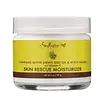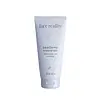What's inside
What's inside
 Key Ingredients
Key Ingredients

 Benefits
Benefits

 Concerns
Concerns

 Ingredients Side-by-side
Ingredients Side-by-side

Water
Skin ConditioningCaprylic/Capric Triglyceride
MaskingGlycerin
HumectantCoco-Caprylate/Caprate
EmollientCetearyl Olivate
Butyrospermum Parkii Butter
Skin ConditioningCetyl Alcohol
EmollientSorbitan Olivate
EmulsifyingCannabis Sativa Seed Oil
EmollientHydrogenated Vegetable Oil
EmollientStearyl Alcohol
EmollientGlyceryl Stearate Citrate
EmollientCetearyl Alcohol
EmollientHamamelis Virginiana Water
AstringentTocopherol
AntioxidantPanthenol
Skin ConditioningAllantoin
Skin ConditioningSodium PCA
HumectantAloe Barbadensis Leaf Juice
Skin ConditioningHydroxyethylcellulose
Emulsion StabilisingGlycine Soja Oil
EmollientSodium Hydroxide
BufferingSodium Hyaluronate
HumectantEthylhexylglycerin
Skin ConditioningHydroxyproline
Skin ConditioningProline
Skin ConditioningGlyceryl Caprylate
EmollientTriethyl Citrate
MaskingBenzoic Acid
MaskingPhenoxyethanol
PreservativeWater, Caprylic/Capric Triglyceride, Glycerin, Coco-Caprylate/Caprate, Cetearyl Olivate, Butyrospermum Parkii Butter, Cetyl Alcohol, Sorbitan Olivate, Cannabis Sativa Seed Oil, Hydrogenated Vegetable Oil, Stearyl Alcohol, Glyceryl Stearate Citrate, Cetearyl Alcohol, Hamamelis Virginiana Water, Tocopherol, Panthenol, Allantoin, Sodium PCA, Aloe Barbadensis Leaf Juice, Hydroxyethylcellulose, Glycine Soja Oil, Sodium Hydroxide, Sodium Hyaluronate, Ethylhexylglycerin, Hydroxyproline, Proline, Glyceryl Caprylate, Triethyl Citrate, Benzoic Acid, Phenoxyethanol
Water
Skin ConditioningCaprylic/Capric Triglyceride
MaskingCoco-Caprylate/Caprate
EmollientCetearyl Alcohol
EmollientGlyceryl Stearate
EmollientGlycerin
HumectantTapioca Starch
Cetearyl Olivate
Niacinamide
SmoothingCarthamus Tinctorius Seed Oil
MaskingPhenoxyethanol
PreservativeAlcohol Denat.
AntimicrobialSorbitan Olivate
EmulsifyingStearic Acid
CleansingCarbomer
Emulsion StabilisingPolysorbate 20
EmulsifyingPolysorbate 60
EmulsifyingEthylhexylglycerin
Skin ConditioningPotassium Sorbate
PreservativeAllantoin
Skin ConditioningBisabolol
MaskingMaltodextrin
AbsorbentHamamelis Virginiana Water
AstringentCitric Acid
BufferingSodium Hydroxide
BufferingFructooligosaccharides
HumectantCitrus Nobilis Peel Oil
MaskingCamellia Sinensis Leaf Extract
AntimicrobialChamomilla Recutita Flower Extract
MaskingSyringa Vulgaris Leaf Cell Culture Extract
Skin ConditioningTotarol
AntioxidantGlycyrrhiza Glabra Root Extract
BleachingCitrus Aurantium Dulcis Peel Oil
MaskingVaccinium Macrocarpon Fruit Extract
AstringentWater, Caprylic/Capric Triglyceride, Coco-Caprylate/Caprate, Cetearyl Alcohol, Glyceryl Stearate, Glycerin, Tapioca Starch, Cetearyl Olivate, Niacinamide, Carthamus Tinctorius Seed Oil, Phenoxyethanol, Alcohol Denat., Sorbitan Olivate, Stearic Acid, Carbomer, Polysorbate 20, Polysorbate 60, Ethylhexylglycerin, Potassium Sorbate, Allantoin, Bisabolol, Maltodextrin, Hamamelis Virginiana Water, Citric Acid, Sodium Hydroxide, Fructooligosaccharides, Citrus Nobilis Peel Oil, Camellia Sinensis Leaf Extract, Chamomilla Recutita Flower Extract, Syringa Vulgaris Leaf Cell Culture Extract, Totarol, Glycyrrhiza Glabra Root Extract, Citrus Aurantium Dulcis Peel Oil, Vaccinium Macrocarpon Fruit Extract
Ingredients Explained
These ingredients are found in both products.
Ingredients higher up in an ingredient list are typically present in a larger amount.
Allantoin is a soothing ingredient known for its protective and moisturizingg properties. Because of this, it is often added to products with strong active ingredients.
Studies show higher concentrations of this ingredient can promote wound healing.
Though it can be derived from the comfrey plant, allantoin is produced synthetically for cosmetic products to ensure purity.
Learn more about AllantoinThis ingredient is an emollient, solvent, and texture enhancer. It is considered a skin-softener by helping the skin prevent moisture loss.
It helps thicken a product's formula and makes it easier to spread by dissolving clumping compounds.
Caprylic Triglyceride is made by combining glycerin with coconut oil, forming a clear liquid.
While there is an assumption Caprylic Triglyceride can clog pores due to it being derived from coconut oil, there is no research supporting this.
Learn more about Caprylic/Capric TriglycerideCetearyl alcohol is a mixture of two fatty alcohols: cetyl alcohol and stearyl alcohol. It is mainly used as an emulsifier. Emulsifiers help prevent the separation of oils and products. Due to its composition, it can also be used to thicken a product or help create foam.
Cetearyl alcohol is an emollient. Emollients help soothe and hydrate the skin by trapping moisture.
Studies show Cetearyl alcohol is non-toxic and non-irritating. The FDA allows products labeled "alcohol-free" to have fatty alcohols.
This ingredient is usually derived from plant oils such as palm, vegetable, or coconut oils. There is debate on whether this ingredient will cause acne.
Due to the fatty acid base, this ingredient may not be Malassezia folliculitis safe.
Learn more about Cetearyl AlcoholCetearyl Olivate is an emulsifier and texture enhancer. It is derived from the fatty acids of olive oil and Cetearyl alcohol, and is biodegradable.
As an emulsifier, it is used to prevent oils and waters from separating. It can also
Manufacturers use the name Olivem 1000. This ingredient has been found to preserve the natural microbiome of skin. Having a healthy microbiome helps keep our skin healthy and protects against harmful bacteria. This ingredient is grouped with Sorbitan Olivate under the name Olivem 1000.
Learn more about Cetearyl OlivateCoco-Caprylate/Caprate is created from fatty coconut alcohol, caprylic acid, and capric acid.
It is a lightweight emollient. Emollients create a thin barrier on the skin to trap moisture in. This helps keep your skin hydrated and soft.
Once applied, Coco-Caprylate/Caprate is absorbed quickly and leaves a silky feel.
Coco-Caprylate/Caprate may not be fungal acne safe.
Learn more about Coco-Caprylate/CaprateEthylhexylglycerin (we can't pronounce this either) is commonly used as a preservative and skin softener. It is derived from glyceryl.
You might see Ethylhexylglycerin often paired with other preservatives such as phenoxyethanol. Ethylhexylglycerin has been found to increase the effectiveness of these other preservatives.
Glycerin is already naturally found in your skin. It helps moisturize and protect your skin.
A study from 2016 found glycerin to be more effective as a humectant than AHAs and hyaluronic acid.
As a humectant, it helps the skin stay hydrated by pulling moisture to your skin. The low molecular weight of glycerin allows it to pull moisture into the deeper layers of your skin.
Hydrated skin improves your skin barrier; Your skin barrier helps protect against irritants and bacteria.
Glycerin has also been found to have antimicrobial and antiviral properties. Due to these properties, glycerin is often used in wound and burn treatments.
In cosmetics, glycerin is usually derived from plants such as soybean or palm. However, it can also be sourced from animals, such as tallow or animal fat.
This ingredient is organic, colorless, odorless, and non-toxic.
Glycerin is the name for this ingredient in American English. British English uses Glycerol/Glycerine.
Learn more about GlycerinHamamelis Virginiana Water is made by distilling parts of the witch hazel plant. You can also call this ingredient "witch hazel water".
The name 'Hamamelis Virginiana Water' refers to the distillation product used in cosmetics. On the other hand, 'Witch Hazel' refers to the active drug ingredient.
Unless it is specified to be non-alcohol, many types of witch hazel ingredients are distilled in denatured alcohol.
Witch Hazel water is an astringent, anti-inflammatory antioxidant, and antibacterial ingredient.
It contains tannins. Tannins have a drying effect when used on skin by constricting proteins. The constriction also minimizes the appearance of pores.
Both the tannins and fragrance found in witch hazel may be skin-sensitizing.
Witch hazel water gets anti-inflammatory and antibacterial properties from its catechin and gallic acid content.
Indigenous groups have used witch hazel to help treat inflammation in North America for centuries.
Learn more about Hamamelis Virginiana WaterPhenoxyethanol is a preservative that has germicide, antimicrobial, and aromatic properties. Studies show that phenoxyethanol can prevent microbial growth. By itself, it has a scent that is similar to that of a rose.
It's often used in formulations along with Caprylyl Glycol to preserve the shelf life of products.
Sodium Hydroxide is also known as lye or caustic soda. It is used to adjust the pH of products; many ingredients require a specific pH to be effective.
In small amounts, sodium hydroxide is considered safe to use. However, large amounts may cause chemical burns due to its high alkaline.
Your skin has a natural pH and acid mantle. This acid mantle helps prevent harmful bacteria from breaking through. The acid mantle also helps keep your skin hydrated.
"Alkaline" refers to a high pH level. A low pH level would be considered acidic.
Learn more about Sodium HydroxideSorbitan Olivate is created from the fatty acids in olive oil and sorbitol.
This ingredient is an oil in water emulsifier. It helps stabilize a product by preventing oils and waters from separating. Sorbitan Olivate also helps hydrate the skin.
Manufacturers sell sorbitan olivate under the name OliveM 1000. OliveM 1000 a multifunctional ingredient. It is self-emulsifying. According to a manufacturer, OliveM 1000 does not disrupt natural skin biome.
Due to its olive oil base, this ingredient may not be fungal-acne safe.
Learn more about Sorbitan OlivateWater. It's the most common cosmetic ingredient of all. You'll usually see it at the top of ingredient lists, meaning that it makes up the largest part of the product.
So why is it so popular? Water most often acts as a solvent - this means that it helps dissolve other ingredients into the formulation.
You'll also recognize water as that liquid we all need to stay alive. If you see this, drink a glass of water. Stay hydrated!
Learn more about Water